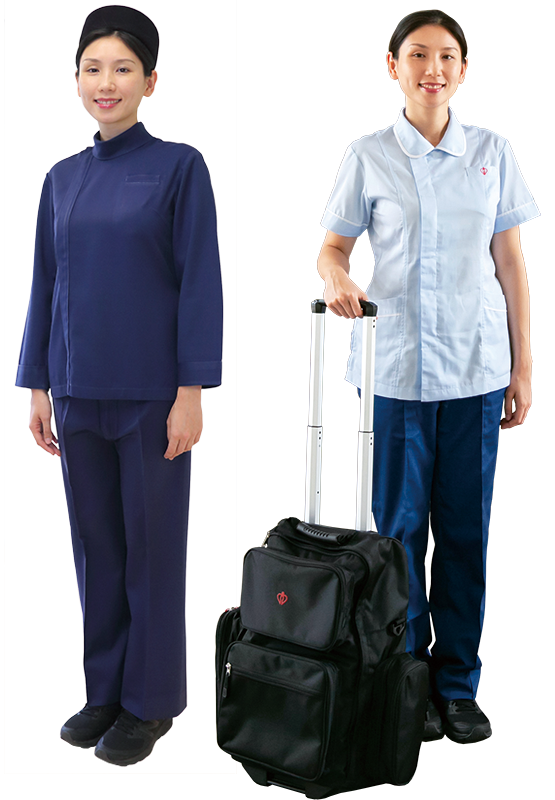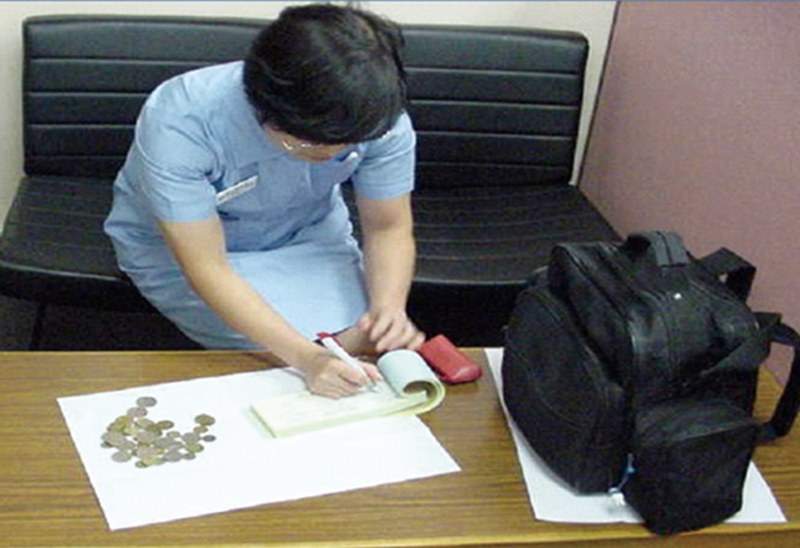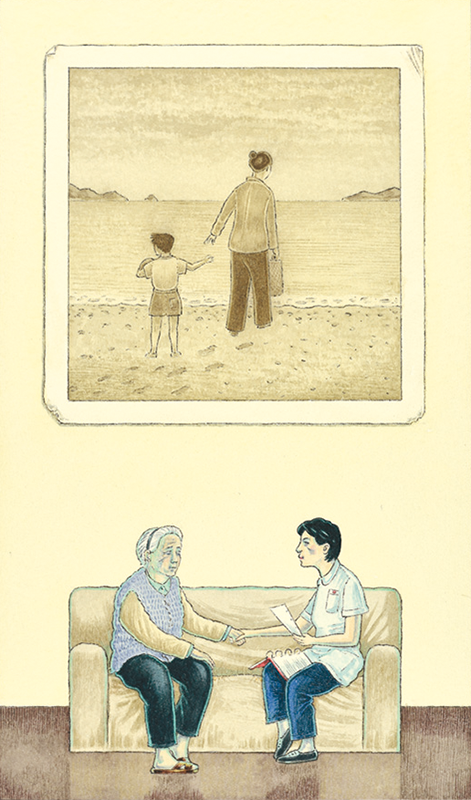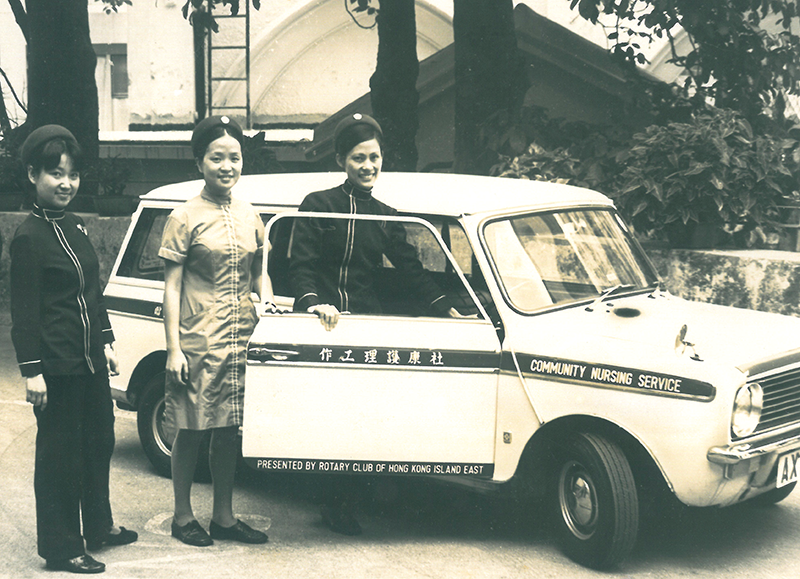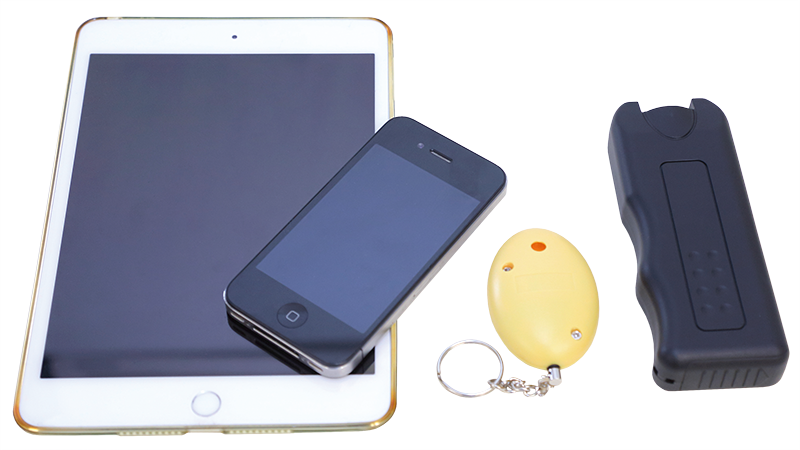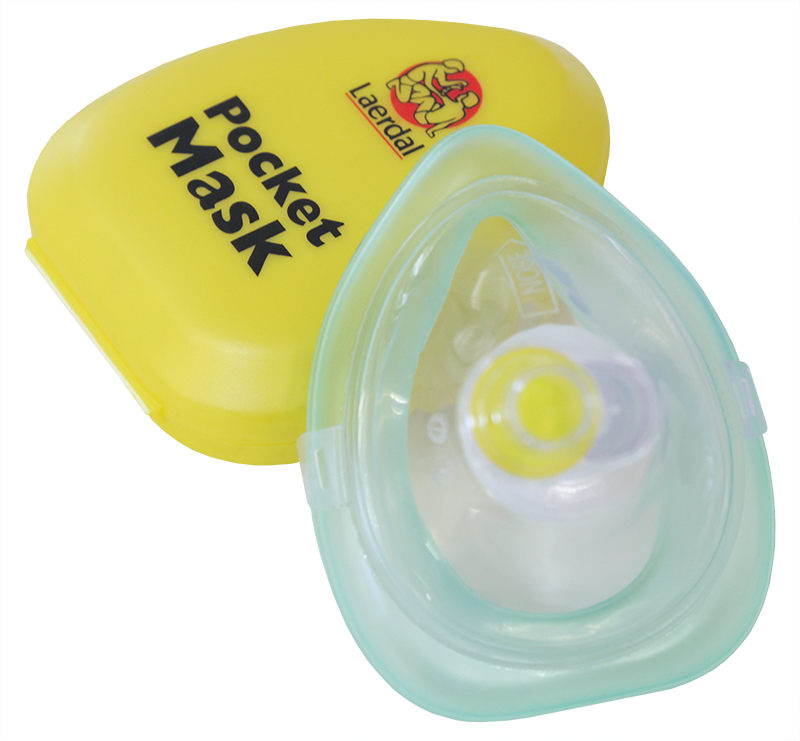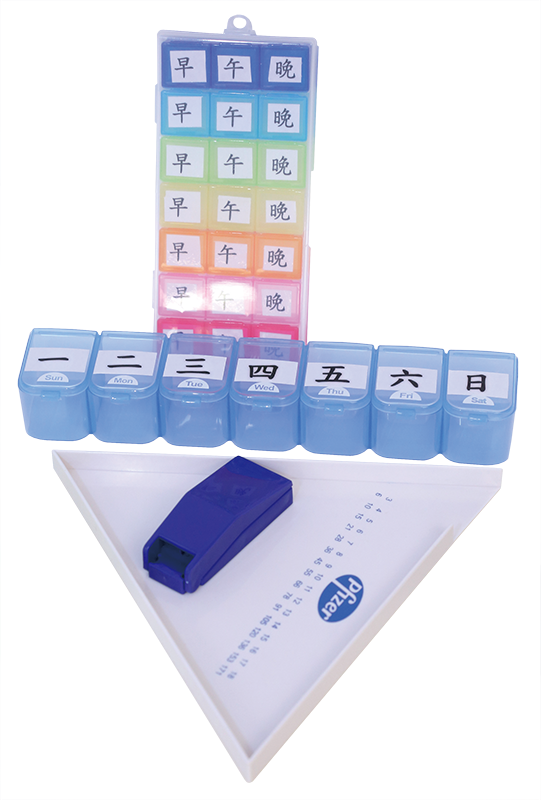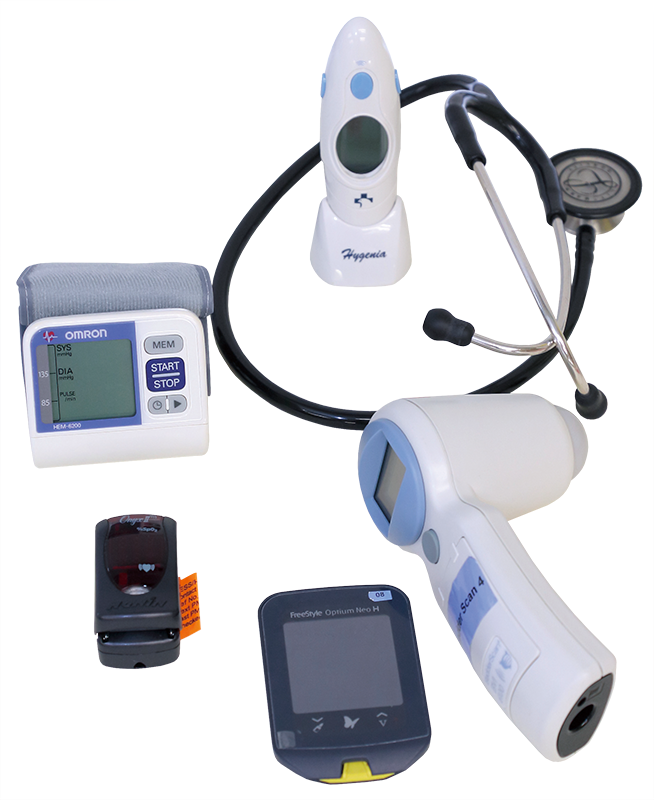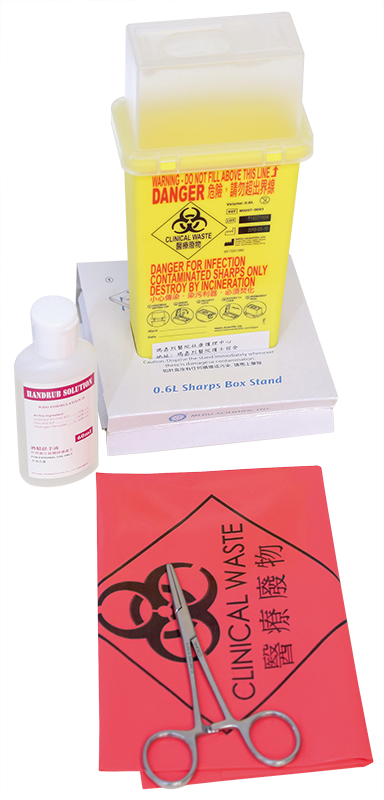Anecdotes
We often see CNS nurses in blue uniform with a large black bag. Travelling in the streets every day, they render home care services to patients living at home. Ever wonder what are inside the large black bag? And what interesting incidents they encountered? Here are some anecdotes of CNS to share with you.
Uniform
In the past, every hospital had its own style of CNS nurse uniform but adopted the same colour tone of the United Kingdom CNS nurse blue uniform. That is why CNS nurses earn the name of ‘Blue Angels’. In earlier years, the summer uniform was a dress while the winter uniform comprised pants and a hat (left). In 2012, HA unified all styles – a Dacron top in light blue and sapphire blue pants for summer (right); and deep blue uniform with red‑rimmed front and pockets for winter.
Comprehensive training
New CNS nurses have to take an orientation programme led by an advanced practice nurse (APN) for at least a month. High degree of independence, good communication skills and professional knowledge are required as they have to handle cases and potential risks alone. And HA provides regular training for CNS nurses on topics like general care, chronic disease management, as well as ‘Post-Registration Certificate Course in Community Nursing’, and specialty care training such as ‘Conservation Sharp Wound Debridement’ and ‘simulation training workshops’ (see photo). Another important aspect of training is occupational safety and health, including self defence, evasion skills and dog bite prevention.
Charge
Patients are charged for every visit. The starting fee was $1 and later went up to $5, and then $34 in 1992 after HA was established and took over the service. The charge has been gradually revised to $80 in 2003, and remains unchanged since then. Individuals with financial difficulties can apply for fee remission through medical social workers. The payment method was rather complicated in the past. The nurse had to collect fees at patient’s home (see photo). Nowadays, hospital will issue payment invoice to patient after the service. Patient or the family can pay by mail or at hospital.
Touching moments
In HA’s newly published pictorial book on touching stories happened in hospitals, there is a story about seeking a missing person. Lee Ka‑yee, Advanced Practice Nurse of Kowloon Hospital CNS, visited Madam Wong (pseudonym), an old lady who lived alone, for injection of insulin and home care. Knowing that the patient wanted to make end-of-life arrangement and wished to meet her long-lost son, Ka‑yee sought help from Red Cross’s tracing service. Mother and son were eventually arranged to meet up. Stepping close to Ms Wong’s home, the originally cautious son cried out “Mum!” He ran to his mother and cried in her arms. The reason that led to their separation did not matter anymore because Madam Wong’s mind was eased. Ka‑yee was glad to see that Ms Wong was respected and cared for. It is more blessed to give than to take. To Ka‑yee, that is the greatest meaning of working as a CNS nurse.
Transportation in the 70s was not well developed and CNS had to trek all the way to patients’ home. Situation improved slightly when Rotary Club of Hong Kong Island East donated the first CNS car to Alice Ho Miu Ling Nethersole Hospital (on Bonham Road) in 1972. Nowadays, with convenient transportation, most CNS nurses travel to patients’ home by public transportation, and taxis are arranged by some clusters for nurses going to remote areas.
An out-of-the-ordinary encounter by a CNS nurse was recorded in the 35th Anniversary Commemorative Book of United Christian Hospital. A nurse was working at a house in Ngau Tau Kok when someone broke in and robbed the house. The robbers just told the nurse to stand aside. And they made their getaway without hurting her a bit. There is honour even among thieves.
1. Personal gadgets e.g. mobile phone, tablet connected to Clinical Management System for viewing patients’ history, dog repellent
2. First-aid items e.g. artificial respiration mask
3. Self-made pill box, pill cutter, pill counter
4. Medical devices e.g. blood pressure monitor, glucose monitor, blood oxygen monitor, ultrasound bladder scanner
5. Container for sharp instrument and clinical waste
To prevent injury due to the heavy bag, before visiting patients, CNS nurses calculate the appropriate weight of their backpack and black bag based on their body weight according to hospital occupational safety and health guidelines. For example, a nurse weighing 55kg should carry a backpack weighing less than 5.5kg, which is 10% of the body weight. Wonder how heavy the bag is? Check out the video here.
● "Patient always on my mind during typhoons!"
COVER STORY
● Birth of CNS: Woman living in a bathtub
● Holistic care passed on in community through generations
FEATURE
● Volunteer experience sheds light on career direction
● Small changes in ward improve patient care
HELEN HA
● Check out the fun facts about HA
● Blood donation, finding way and shopping made easy with apps
WHAT'S NEW
● New blood of HA Board vows to speak up for colleagues
● 2018/19 Funding and budget allocation at a glance
● 33 overseas-trained staff all set for HK’s first HBOT centre in hospital
STAFF CORNER
● 30 awardees on 2018 Honours List
● 延續的生命 (Chinese version only)

